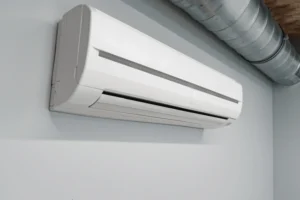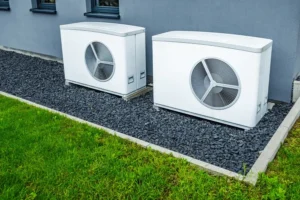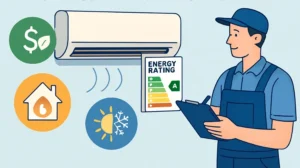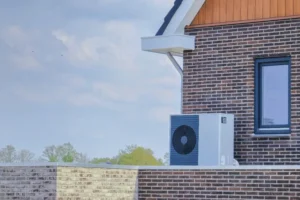Why Sizing Matters
In Ottawa, where January averages sit around -14 °C and arctic cold snaps can hit -30 °C, the size of your heat pump isn’t just about comfort, it’s about survival during the depths of winter. A heat pump that’s too small will run constantly, struggling to keep up when the temperature plunges. One that’s too large will short-cycle, wasting electricity, creating uneven comfort, and putting unnecessary stress on components.
Proper sizing ensures:
- Consistent indoor temperatures year-round
- Lower monthly bills thanks to optimal efficiency
- Reduced wear and tear, extending the system’s life
- Quieter operation, since the system runs steadily instead of starting and stopping frequently
Step 1: Understand Manual J Calculations
Manual J is the HVAC industry’s standard method for determining your home’s heating and cooling load. It calculates BTU (British Thermal Units) requirements based on:
- Square footage of your home
- Wall, attic, and floor insulation values
- Window and door types, sizes, and orientations
- Air leakage rates
- Ottawa’s historical weather data, including design temperatures for both heating and cooling
Without this calculation, sizing is guesswork. Two homes with the same floor area can have very different heating loads if one is older with poor insulation and the other is newly built to modern energy codes.
Step 2: Account for Ottawa’s Cold Climate
In mild climates, a heat pump may rarely need to operate at full capacity. In Ottawa, the lowest temperatures dictate your system’s required size. Even a top-tier heat pump loses capacity as temperatures drop.
For example:
- Mitsubishi H2i® retains nearly 100% capacity at -15 °C and continues operating down to -30 °C
- A standard heat pump could lose 40% capacity at -15 °C, forcing backup heat to cover the shortfall
When sizing, your HVAC contractor will factor in design day temperatures and choose a model that can carry most (if not all) of the load without excessive reliance on backup.
Graph: Capacity retention at −15 °C
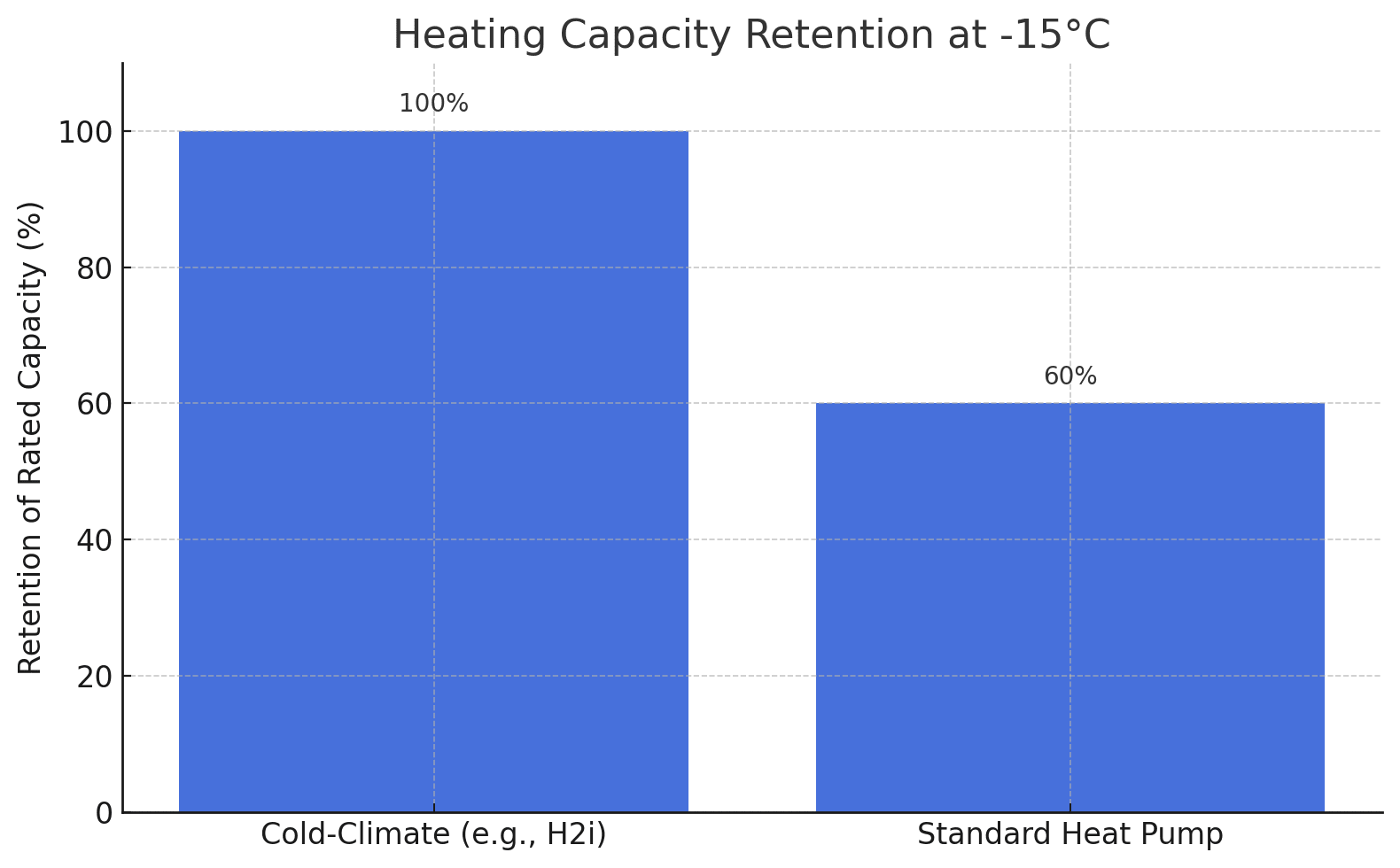
Step 3: Factor in Home Efficiency Upgrades
If you plan to improve insulation, replace windows, or seal air leaks, do it before your load calculation. Every improvement reduces the BTU requirement, potentially saving thousands by allowing you to choose a smaller heat pump.
Even simple upgrades like sealing attic hatches or adding weatherstripping to doors can have a measurable impact on heat loss.
Step 4: Choose the Right Capacity
Most Ottawa homes fall into these approximate ranges:
- Small, well-insulated home (1,000–1,500 sq. ft.): 18,000–24,000 BTU/h
- Medium home (1,500–2,000 sq. ft.): 24,000–36,000 BTU/h
- Large or older home (2,000+ sq. ft.): 36,000–60,000 BTU/h (often with backup heat)
Note: These are rough estimates. Only a Manual J will give an accurate figure.
Below is a quick reference table for estimating heating capacity needs based on Ottawa home size and insulation level.
A Manual J calculation is still required for accuracy.
| Home Size (sq. ft.) | Insulation Quality | Approx. Heating Load (BTU/h) | Recommended Heat Pump Capacity | Backup Heat Recommended? |
| 1,000–1,500 | Excellent (new build) | 18,000–22,000 | 1.5–2 tons | Optional |
| 1,000–1,500 | Average | 22,000–26,000 | 2–2.5 tons | Yes (extreme cold) |
| 1,500–2,000 | Excellent | 24,000–30,000 | 2–2.5 tons | Optional |
| 1,500–2,000 | Average | 30,000–36,000 | 2.5–3 tons | Yes |
| 2,000+ | Excellent | 32,000–45,000 | 3–3.5 tons | Yes |
| 2,000+ | Average or Poor | 45,000–60,000+ | 3.5–5 tons | Yes |
How to Read This Table:
- Tons refer to the cooling capacity equivalent (1 ton = 12,000 BTU/h).
- Excellent insulation means R-60 attic, R-24 walls, and high-efficiency windows.
- Average insulation reflects typical older homes without major upgrades.
- Backup heat is strongly advised for Ottawa’s coldest days, especially in older homes.
Graph: Recommended capacity ranges
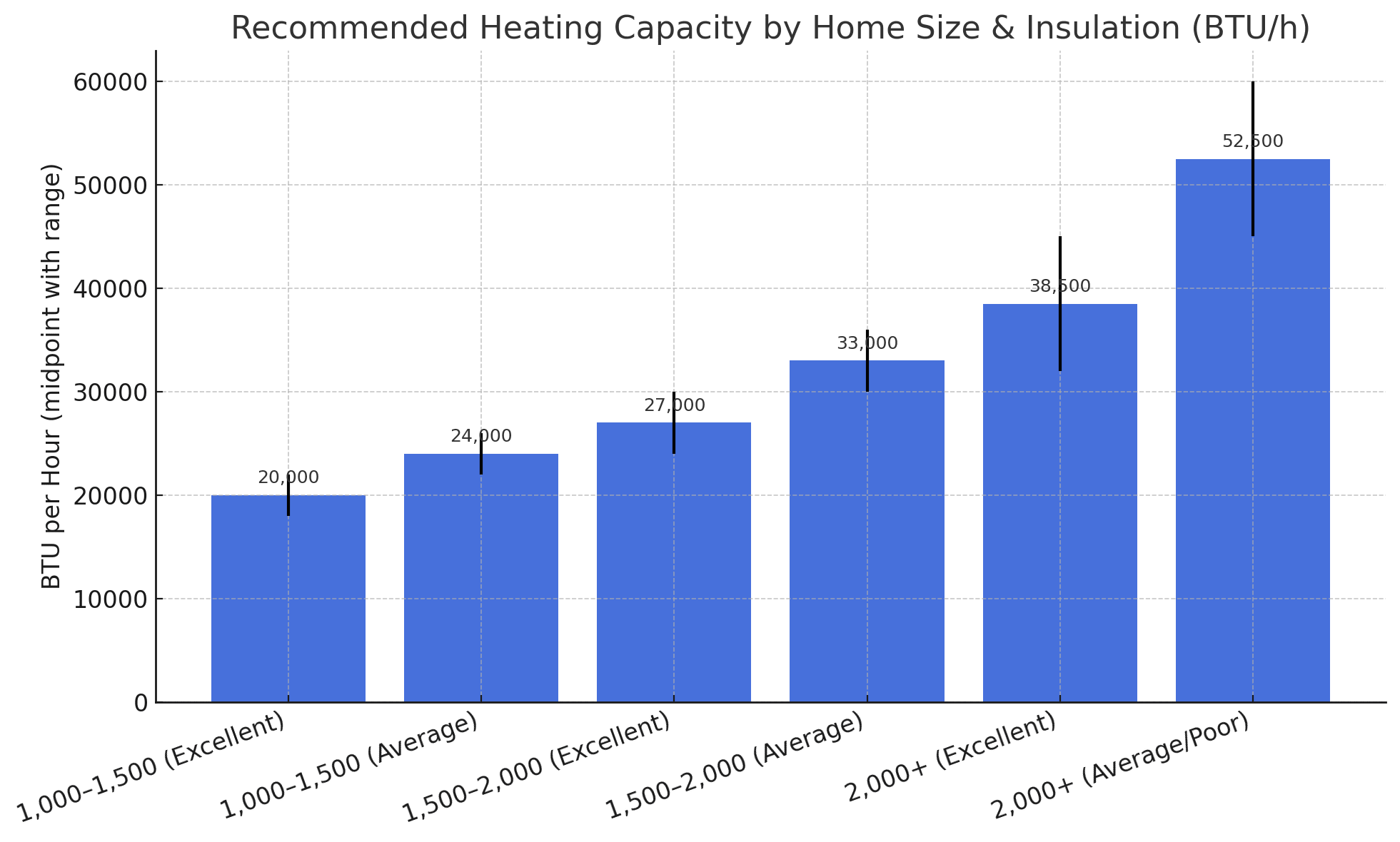
Step 5: Consider Modulating and Variable-Speed Models
Variable-speed heat pumps can adjust their output to match the exact heating or cooling need. In Ottawa, this means:
- Steady heat on mild days without overheating
- Full capacity on extreme cold nights
- Better humidity control in summer
This flexibility keeps comfort levels steady without wasting energy.
Step 6: Backup Heat is Still Your Friend
Even the best cold-climate heat pumps benefit from supplemental heating during extreme cold snaps. Options include:
- Electric resistance elements built into the air handler
- A dual-fuel setup with a gas furnace that takes over below a set temperature
This hybrid approach offers peace of mind while keeping running costs low most of the winter.
Frequently Asked Questions
- Why is proper heat pump sizing important?
Correct sizing maximizes comfort, efficiency, and lifespan. Oversized units short-cycle, wasting energy, while undersized units struggle during Ottawa’s extreme cold. - What is a Manual J calculation?
Manual J is an HVAC industry method to calculate your home’s heating and cooling needs based on size, insulation, windows, and Ottawa’s climate data. - Does Ottawa’s cold climate affect heat pump sizing?
Yes. Extreme winter lows require heat pumps with strong low-temperature performance and possible backup heating to maintain comfort during –25 °C to –30 °C cold snaps. - Can I size a heat pump myself?
It’s risky. Without professional load calculations, you may choose an inefficient unit, causing high energy bills, uneven comfort, and potential premature equipment failure. - What happens if my heat pump is too big?
Oversized heat pumps cycle on and off often, leading to temperature swings, reduced efficiency, higher wear, and shorter system life. - How long will a properly sized heat pump last?
With correct sizing, professional installation, and annual maintenance, cold-climate heat pumps in Ottawa typically last between 15 and 20 years. - Do I always need backup heat in Ottawa?
Yes, for reliability. Even top cold-climate models benefit from electric or dual-fuel backup during prolonged extreme cold events. - Can insulation upgrades change heat pump size?
Yes. Improving insulation and sealing air leaks lowers heating demand, often allowing for a smaller, more efficient, and less costly heat pump. - Are rebates available for Ottawa homeowners?
Yes. Federal loans up to CA$40,000 and Ontario rebates up to CA$7,500 are available for eligible cold-climate heat pump installations. - How often should I service my heat pump?
Annually. Routine maintenance ensures maximum efficiency, prevents breakdowns, maintains warranty coverage, and extends system lifespan.
Conclusion: Get It Right the First Time
Proper heat pump sizing in Ottawa is not guesswork – it’s a science based on precise calculations. By combining a Manual J load calculation with the right cold-climate model, you’ll enjoy comfort, efficiency, and reliability for years to come.
Work with a certified HVAC contractor who understands Ottawa’s weather patterns, rebate programs, and the unique performance characteristics of cold-climate units. With the right sizing and installation, your heat pump will be an investment that pays for itself in comfort and energy savings.
Contact details
Heat Pump Ottawa Pros
Address: 150 Elgin St, Suite 807, Ottawa, ON K2P 1L4
Phone Number: 613-706-0838
Email: heatpumpottawapros@gmail.com
Office Hours
Monday – Sunday: 9:00 AM – 5:00 PM

